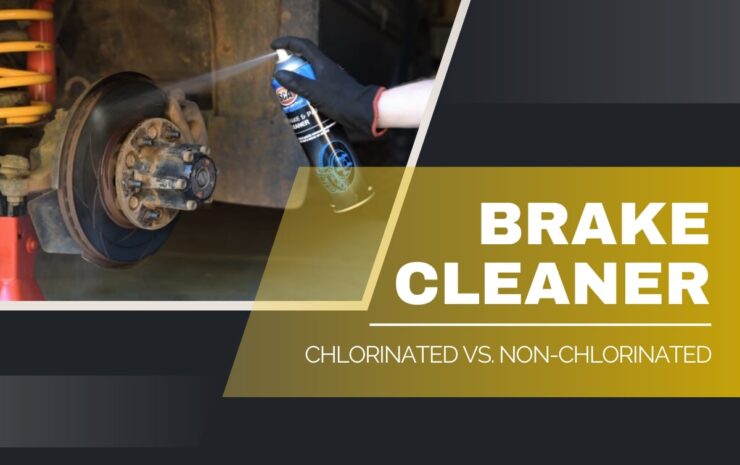When it comes to maintaining your vehicle, few components are as crucial as your brakes. Regular cleaning and maintenance of your brakes are essential to ensure optimal performance and safety. One key aspect of brake care is choosing the right brake cleaner.
In this comprehensive guide, we will dive deep into the world of brake cleaners, specifically comparing chlorinated and non-chlorinated options. Our goal is to provide you with sufficient information that will help you make an educated decision on the best brake cleaner for your needs. So, buckle up, and let’s get started!
Basics You Should Know About Brake Cleaners
Before we compare the two main types of brake cleaners, it’s important to understand what they are and why they are necessary. Brake cleaners are solvent-based cleaning agents designed to remove dirt, grease, oil, and other contaminants from your vehicle’s brake system. They are used to clean brake parts such as discs, calipers, pads, and rotors, ensuring optimal brake performance and longevity.
The Chlorinated Contender
Chlorinated brake cleaners have been the go-to choice for many mechanics and DIY enthusiasts for years. They contain chlorinated solvents, such as tetrachloroethylene, trichloroethylene, and methylene chloride. These solvents are highly effective in dissolving contaminants and evaporating quickly, leaving no residue behind.
- Powerful cleaning: Chlorinated brake cleaners offer superior cleaning power, effectively removing even the most stubborn dirt, grease, and grime.
- Fast evaporation: These cleaners evaporate quickly, allowing you to clean your brakes and get back on the road in no time.
- No residue: Due to their fast evaporation, chlorinated cleaners leave no residue, ensuring your brakes remain clean and efficient.
- Health and safety concerns: The chemicals used in chlorinated brake cleaners are toxic and can be harmful if inhaled or absorbed through the skin. Proper ventilation and personal protective equipment (PPE) are essential when using these cleaners.
- Environmental impact: Chlorinated solvents are harmful to the environment, with links to ozone depletion and water pollution.
- Flammability: While less flammable than non-chlorinated alternatives, chlorinated brake cleaners can still pose a fire risk, especially when used near an ignition source.
The Non-Chlorinated Challenger
In recent years, non-chlorinated brake cleaners have gained popularity as a safer, more environmentally friendly alternative to chlorinated cleaners. These cleaners use non-chlorinated solvents, such as heptane, hexane, and acetone, to dissolve contaminants.
- Safer for the user: Non-chlorinated brake cleaners pose fewer health risks, with lower toxicity levels and less risk of chemical burns.
- Environmentally friendly: By avoiding the use of chlorinated solvents, these cleaners have a reduced environmental impact.
- Compatibility with rubber and plastic: Non-chlorinated cleaners are generally gentler on rubber and plastic components, reducing the risk of damage to your vehicle’s brake system.
- Lower cleaning power: Non-chlorinated cleaners may not be as effective at removing stubborn contaminants, requiring additional effort or multiple applications.
- Slower evaporation: These cleaners evaporate more slowly, which can increase the time it takes to complete your brake cleaning.
- Flammability: Non-chlorinated brake cleaners are more flammable than their chlorinated counterparts, so caution must be exercised when using them near open flames or other ignition sources.
Making the Right Choice for Your Brakes
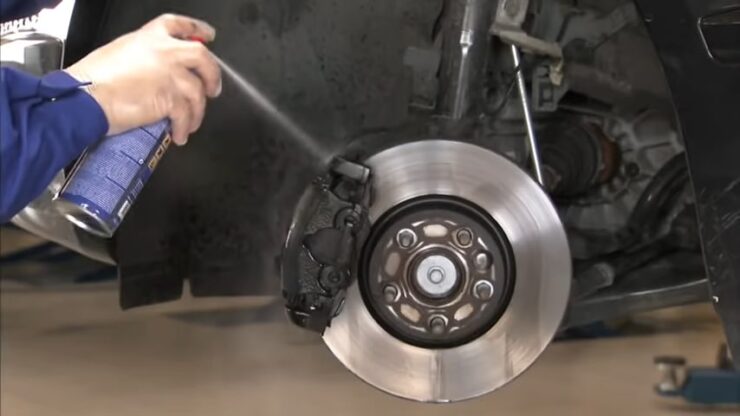
Now that we’ve outlined the pros and cons of both chlorinated and non-chlorinated brake cleaners let’s explore how to choose the right one for your specific needs.
Consider your personal safety
If you’re concerned about the health risks associated with chlorinated cleaners, non-chlorinated options may be a better choice. Make sure to use proper PPE and work in a well-ventilated area, regardless of the cleaner you choose.
Assess your cleaning requirements
If your brakes are heavily contaminated, or you need a powerful cleaner to tackle stubborn grime, a chlorinated cleaner might be more effective. However, for routine maintenance and lighter cleaning tasks, a non-chlorinated cleaner should suffice.
Evaluate environmental impact
If minimizing your ecological footprint is a priority, a non-chlorinated cleaner is a more environmentally friendly choice. These cleaners produce fewer harmful emissions and have less potential to damage the ozone layer or pollute water sources.
Check compatibility with your vehicle
Some brake components, such as rubber seals and plastic parts, may be more susceptible to damage from chlorinated cleaners. Always consult your vehicle’s owner’s manual or contact the manufacturer to confirm the compatibility of a specific cleaner with your brake system.
Assess local regulations
In some regions, the use of chlorinated brake cleaners may be restricted due to their environmental impact. Be sure to verify any local regulations before purchasing and using a chlorinated cleaner.
Application Tips for Optimal Brake Cleaning
Regardless of the type of brake cleaner you choose, proper application is key to achieving the best results. Follow these tips to effectively clean your brakes and extend their lifespan:
1. Preparation
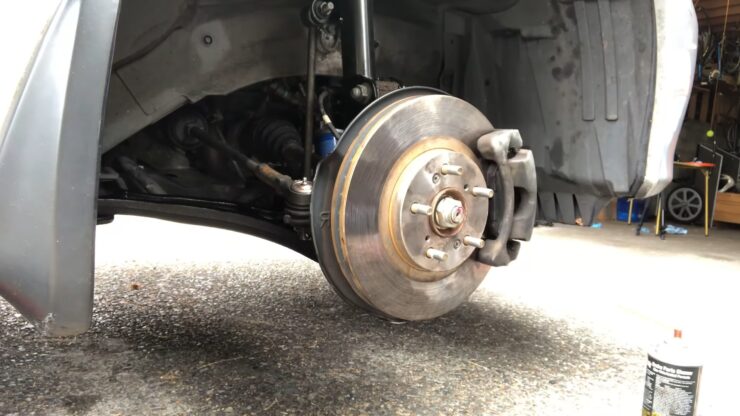
Begin by removing the wheel and exposing the brake components. Make sure your vehicle is safely supported on jack stands or ramps, and wear appropriate PPE, including gloves and safety goggles.
2. Targeted spraying
Use the cleaner’s straw attachment to direct the spray precisely onto the brake components, focusing on areas with visible contamination. Be sure to avoid spraying cleaner on painted surfaces, as it may damage the paint.
3. Brushing
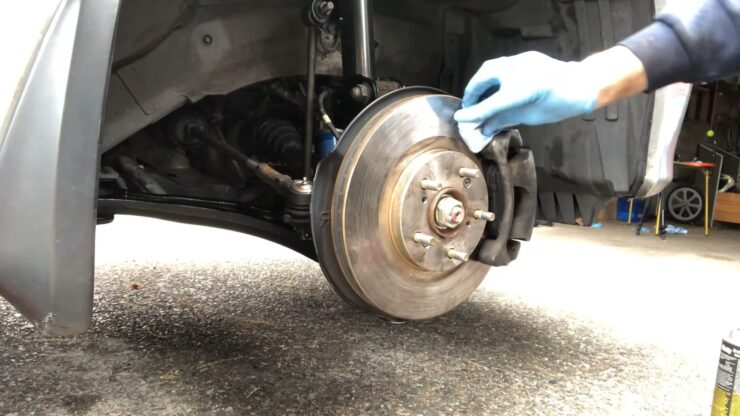
For stubborn grime, use a stiff-bristled brush to scrub the affected areas. This can help break up and remove contaminants that the cleaner alone cannot dissolve.
4. Rinsing
If using a non-chlorinated cleaner, you may need to rinse the brake components with water after cleaning to remove any remaining residue. This step is generally not necessary with chlorinated cleaners, as they evaporate quickly and leave no residue.
5. Drying
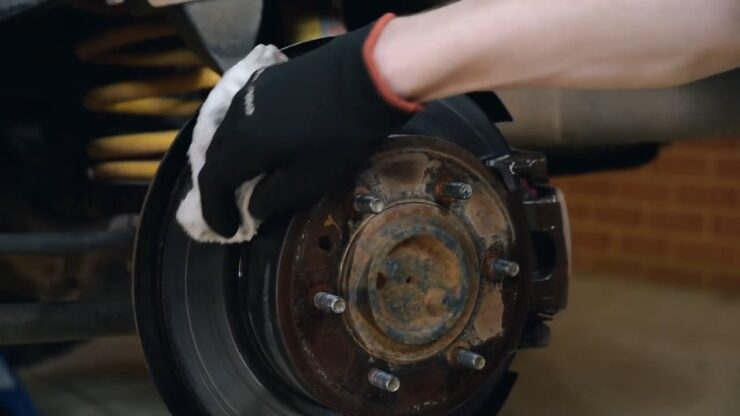
Allow the brake components to air-dry completely before reassembling your vehicle. This will help ensure optimal brake performance and prevent moisture-related issues.
Final Words
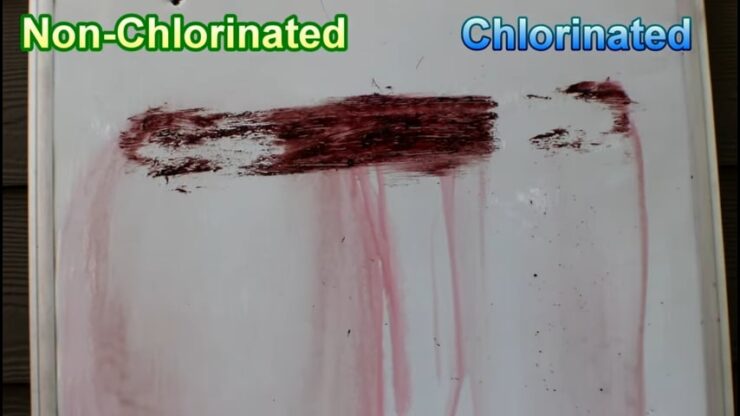
Both chlorinated and non-chlorinated brake cleaners have their unique benefits and drawbacks, making a choice between them largely a matter of personal preference and specific needs. By considering factors such as personal safety, cleaning power, environmental impact, compatibility, and local regulations, you can make an informed decision that best suits your requirements.
Incorporating proper brake cleaning techniques and regular maintenance can significantly extend the lifespan of your brake components and ensure optimal performance. Regardless of the cleaner you choose, always follow the manufacturer’s guidelines and practice safe handling and application procedures.
Armed with the knowledge provided in this guide, you can now confidently navigate the world of brake cleaners and make the best choice for your vehicle’s braking system. We wish you happy cleaning and safe driving!

